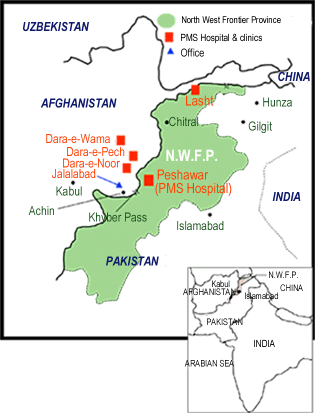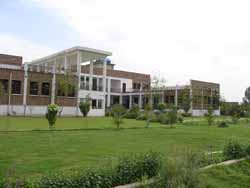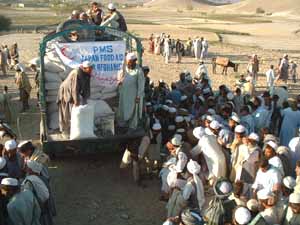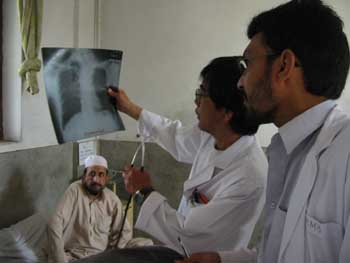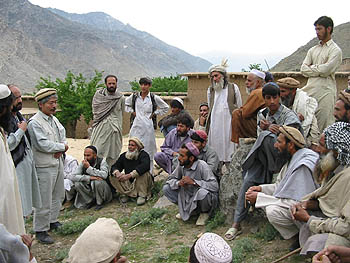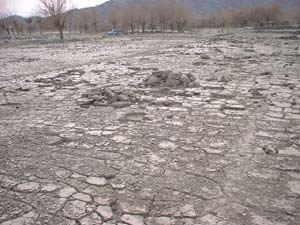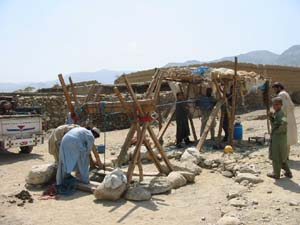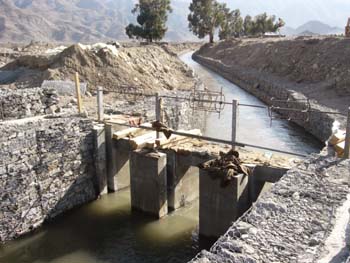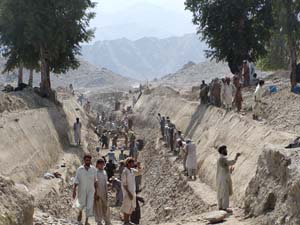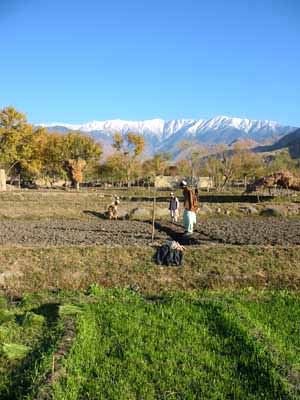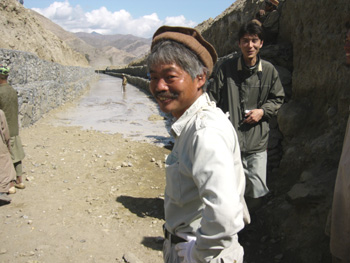|
ABOUT US
PESHAWAR-KAI |
|
1.Medical Project 2.Green Ground Fund for Afghanistan Programme 2(1).Water Supply and Canal Construction Projects 2(2).Agriculture Project Profile of Tetsu Nakamura |
|
In 1984, Dr. Nakamura was assigned to Peshawar Mission Hospital in the North West Frontier Province (NWFP), Pakistan. At that time the Hansen's disease ward of the hospital was treating patients without sufficient medical equipment and without adequate facilities for carrying out operations. In 1986, we began to treat Afghan refugees who had fled to Pakistan. Later, in December 1991, we opened a satellite clinic in Dara-e-Noor in the north-eastern mountainous area of Afghanistan as a base for further work in the country. This was our first clinic in Afghanistan. Subsequently, two more clinics were built in the north-eastern regions of Afghanistan. Since then we have provided medical services to the people in villages in mountainous regions, who previously had no access to medical institutions. |
|
|
|
1.Medical Project |
In addition to the treatment of patients, this project also includes medical education and training for local staff. Since Afghan women, in keeping with Islamic tradition, never expose their skin to male strangers, even to medical doctors, Japanese female nurses have been helping to care for female patients. We have also made efforts to rehabilitate Hansen's disease patients. A sandal workshop in the hospital compound has supplied sandals to patients with the disease to protect their feet from plantar ulcers caused by neuro-sensory damage. |
- Total annual cases: about 160,000 cases in 2002 - Medical staff: 110 in 2003 |
|
2. Green Ground Fund for Afghanistan Programme |
In response, as a part of our medical project, PMS started our Water Supply Project in August of the same year. This involved digging wells and rejuvenating karez in the eastern regions of Afghanistan. The project continued even during the U.S. air attacks. |
|
2(1). Water Supply and Canal Construction Projects
Looking to the long term, a 15-year irrigation programme was started in March 2003 using the abundant water of the Kunar River. The construction of a 14-kilometer long canal has already begun. −Working sites: 1132 sites (as of February 2004) −Usable water sources: 1057 sites (as of February 2004) −Water Supply & Canal Construction Projects staff: 140 (as of 2003) −Labourers: 700 (as of 2003) |
2(2). Agriculture Project
|
|
Profile of Tetsu Nakamura
−Representative of Peshawar-kai in Pakistan and Afghanistan −Executive director of Peshawar-kai Medical Services −Born in Fukuoka City, Japan in 1946 −Graduated from Medical School of Kyushu University −Served in Japanese hospitals −Assigned to a hospital in Peshawar, the capital city of North West Frontier Province in Pakistan in 1984 −Has treated Afghan refugees including Hansen's disease patients |
| Top(English)» |
